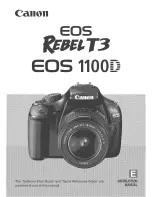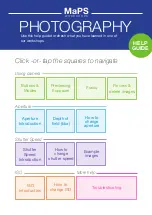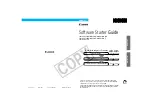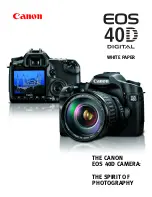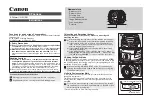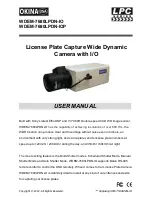
5.6 CAMERA TRUE FOCUS
The True Focus setting (AF-T) is generally used in specific
circumstances to automatically correct for camera angle/focus
setting discrepancies, but it can also be combined with other
autofocus settings.
To exploit True Focus correctly, a few important points should be
studied in order to obtain a full understanding of how and when
to use it. Basically, there are four variables to pay attention to:
(a) proximity of camera to subject,
(b) focal length of lens,
(c) aperture setting and
(d) movement of camera and/or subject after setting.
The closer you remain to the ideal situation with regard to these
variables, the more noticeable the effect of True Focus will be.
●
The closer you are to the subject, the worse the original
problem becomes. Consequently, the need for True Focus
solution becomes greater and its application thereby
becomes more noticeable.
●
Short focal length (wide-angle) lenses naturally decrease
camera to subject distances and therefore, following
the point in (a), produce a greater need for True Focus
adjustments.
●
Smaller aperture increase the depth of field and
therefore would lessen the need for a True Focus
solution. However, smaller apertures produce a different
visual effect, so True Focus therefore allows the
exploitation of the shallow depth of field (produced by
larger apertures) without the fear of unwanted focus
restrictions.
●
The calculations involved in True Focus use, amongst
other things, camera to subject distances to calculate
the required amount of adjustment. It therefore follows
that if the camera or he subject move after the initial
setting has been made, the calculations will not
be applicable anymore. So, to ensure the optimum
correction, both the photographer and the subject should
restrict movement as much as possible. Please note that
with some lenses (particularly longer length lenses) just
a few centimetres movement can essentially ruin the
result.
True Focus can be used with longer lenses, smaller apertures
but the further you come from situations similar to the ‘ideal’
as described above, the less the effect will be until it has no
visible effect at all. Please remember that although True Focus
can noticeably improve a demanding shoot it will only work
effectively in the specific circumstances it was designed for.
H6D
www.hasselblad.com
USER GUIDE
To Use
110
AF-T True Focus Mode
Summary of Contents for H6D
Page 1: ...Version 160421 v1 1 User Guide ...
Page 8: ...1 INTRODUCTION ...
Page 13: ...H6D www hasselblad com USER GUIDE Introduction 13 ...
Page 14: ...2 SAFETY ...
Page 17: ...3 OVERVIEW ...
Page 54: ...4 TO PREPARE ...
Page 66: ...5 TO USE ...
Page 83: ...H6D www hasselblad com USER GUIDE To Use 83 AUTOMATIC EXPOSURE P AND PV MODE ...
Page 171: ...6 ACCESSORIES ...
Page 186: ...7 TROUBLESHOOTING ...































